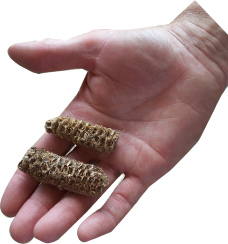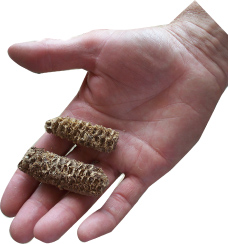The Fremont Indians of Utah adopted farming technology that would be wiped out by their conquerors, the Utes.
One of the most mysterious discoveries found in ancient Utah is a technological and lifestyle regression that occurred around 1250 -1300 AD, when the Fremont Indians’ culture vanished in less than a century.
The Fremonts were likely an offshoot of the Aztecs, but they maintained a distinct culture.
As the domestication of corn, squash and beans became an integral part of the diet for the natives living in and around Utah, Idaho and Wyoming, basket weaving and pottery became popularized for storage implements.

Various Indian cultures are studied by the debris they left behind and the places they abandoned. The Fremont culture is distinct for their grey pottery, unique moccasins, pictographs and ancient dwellings. All of these items analyzed by carbon dating provide clues to archaeologists attempting to solve the mystery of their disappearance.
Unlike Utah farmers today, there was no threat of encroaching suburban sprawl, but compared to their European counterparts yields were meager due to the lack of variety of domesticated crops.
The Fremont grew Mogollon corn that could fit inside the palm of a hand. This corn was a modern marvel of the day. Taking thousands of years to properly domesticated for its size and drought tolerance, Mogollon corn spread from South America to North America.
The Fremont people did not rely on farming to the degree that the Aztecs did, but like the Aztecs, subsistence farms allowed the tribes to become more sedentary, which enabled them to build pit houses and granaries. This changed the nature of their living conditions. Fremont Indians, like the Pueblo Indians from Southern Utah and Arizona, settled into semi-subterranean “pit houses” and pueblos rather than teepees or dugouts common to most hunter-gatherers.
Settling allowed farmers to develop methods for increasing crop yields and improve their predictions of weather and seasonal patterns. The Fremont have always been classified as “hunter/gatherer” Indians, but recent discoveries at Range Creek—an area protected and hidden between book cliffs of Tavaputs Plateau and the Green River’s Desolation Canyon in East Central Utah —has recently become a treasure trove for artifacts.
Thousand year-old dwellings and food-storage structures are so well preserved they still contain thousand-year-old ears of corn as well as distinctive Aztec pottery.
Massive pit houses, three times as large as any previously found anywhere, point to a more sophisticated culture than previously realized.
The Fremont Indians adopted astronomy and devised specialized calendars by strategically positioning rock piles along a vast plain. They read this massive calendar by examining the alignment of star formations and the sun, indicating the best dates to plant and harvest. An amazing site is the Parowan Gap in South Central Utah, which contains not only a preserved astronomy observatory but also vivid pictographs.
New clues at Range Creek are supporting the theory that the Fremont Indians were conquered and displaced by the ancestors of the Ute, Paiute and Shoshone Indians who migrated from Northeastern California.
Archaeologists now conclude that a 25-year drought was underway when the Fremont’s decline began in 1250; this wide-spread drought likely made farming far less viable and, as a result, Fremont Indians began relying more on hunting and gathering.
At this same time, the Ute Paiute and Shoshone Indians began migrating into Fremont territory from Northeastern California. “When people are starving and looking for ways to survive,” says archaeologist David Madsen, author of Exploring the Fremont, “there’s almost always violence.” —quoted from U.S. News and World Report.
There is no evidence that the ancestors of the Shoshone or Utes had an epic battle with the Fremont Indians, but the Range Creek is offering more clues to this ancient history than ever before. The preservation of Range Creek is all thanks to local rancher Waldo Wilcox, who protected the site for 50 years until 2001, when he sold it for $2.5 million to the State of Utah, where archeological studies are continuously underway.§
The impetus for this story came from reading the excellent book by Jared Diamond Guns Germs and Steel. The story of Utah’s native americans has been falsely accounted since white settlers arrived. Diamond’s book uses the latest in archeological evidence to better understand how it was that Europeans so easily conquered and acquired the land of America rather than vice versa.
Top Picks For Summer Indian Archaeology Trips in Utah
San Rafael Swell –
probably the largest collection of rock art and intricate carvings.
Parowan Gap –
could be described as Utah’s stonehenge; mysterious and amazing.
Gooseneck State Park –
near Mexican Hat, Utah, and home of Newspaper Rock.
More Fremont rock art in Emery County
More on Range Creek and Waldo Wilcox
http://ngm.nationalgeographic.com/2006/08/ancient-fremont/roberts-text
http://www.thefurtrapper.com/fremont_indians.htm






